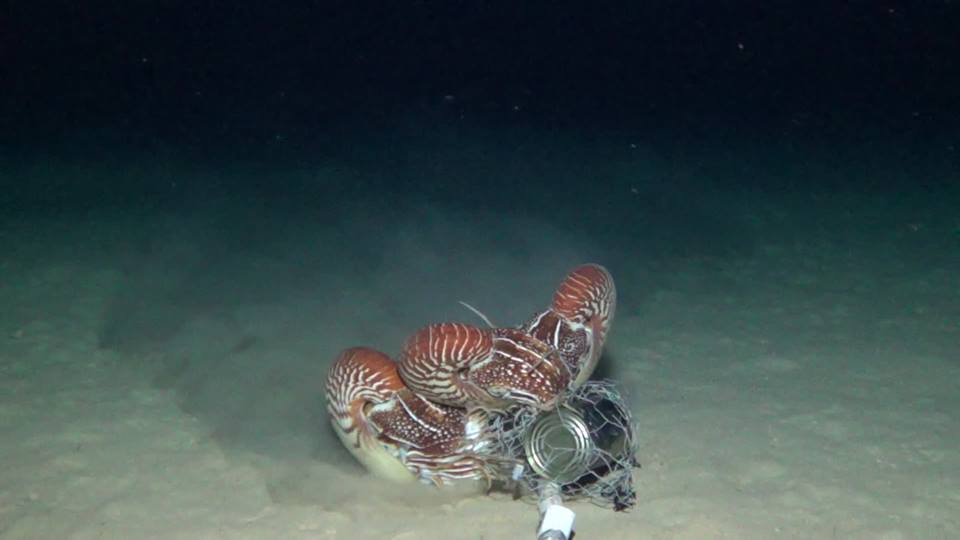Huge News! US Proposal Submitted to protect all chambered nautiluses!
Read the proposal & learn more here
Why is the United States concerned about the conservation of nautiluses?
We are concerned that continued, unregulated international trade will be detrimental to the survival of these iconic and ancient species. Their very nature makes them innately vulnerable to overharvest: nautiluses are late-maturing and long-lived, and they produce a small number of eggs that require a lengthy incubation period. Yet all nautilus species are found in the international trade—driven by demand for their shells—with no known management plans and with little ability to recolonize areas that have been overharvested except by chance events.
Why did we propose to list chambered nautiluses in CITES Appendix II?
CITES Appendix II includes species not necessarily threatened with extinction, but for which trade must be controlled in order to avoid their overutilization. Species that are listed in Appendix II of CITES are not banned from international trade, but must be accompanied by certain permits when traded internationally. These permits signify: 1) that the specimen in trade has been legally acquired, and 2) that the trade is not detrimental to the species’ survival in the wild. A CITES listing will secure the cooperation of 182 CITES Parties to ensure the sustainable use and conservation of these species for generations to come.
What’s next?
This proposal will be among the many items considered by CITES Parties at the 17th Meeting of the Conference of the Parties (CoP17) that will be held in Johannesburg, South Africa from September 24 – October 5, 2016. The road to CoP17 includes outreach and sharing information with the public, range countries, and other CITES Parties to gain support for our proposal.



